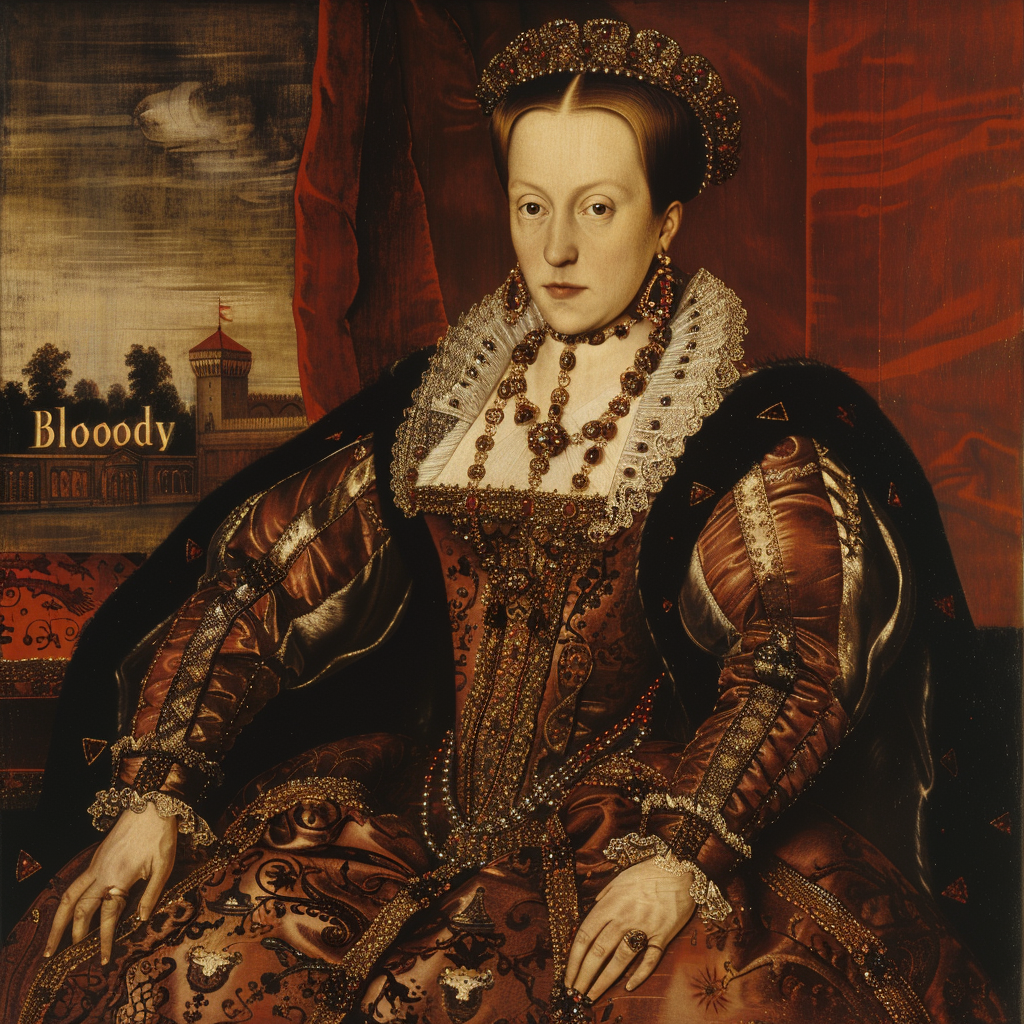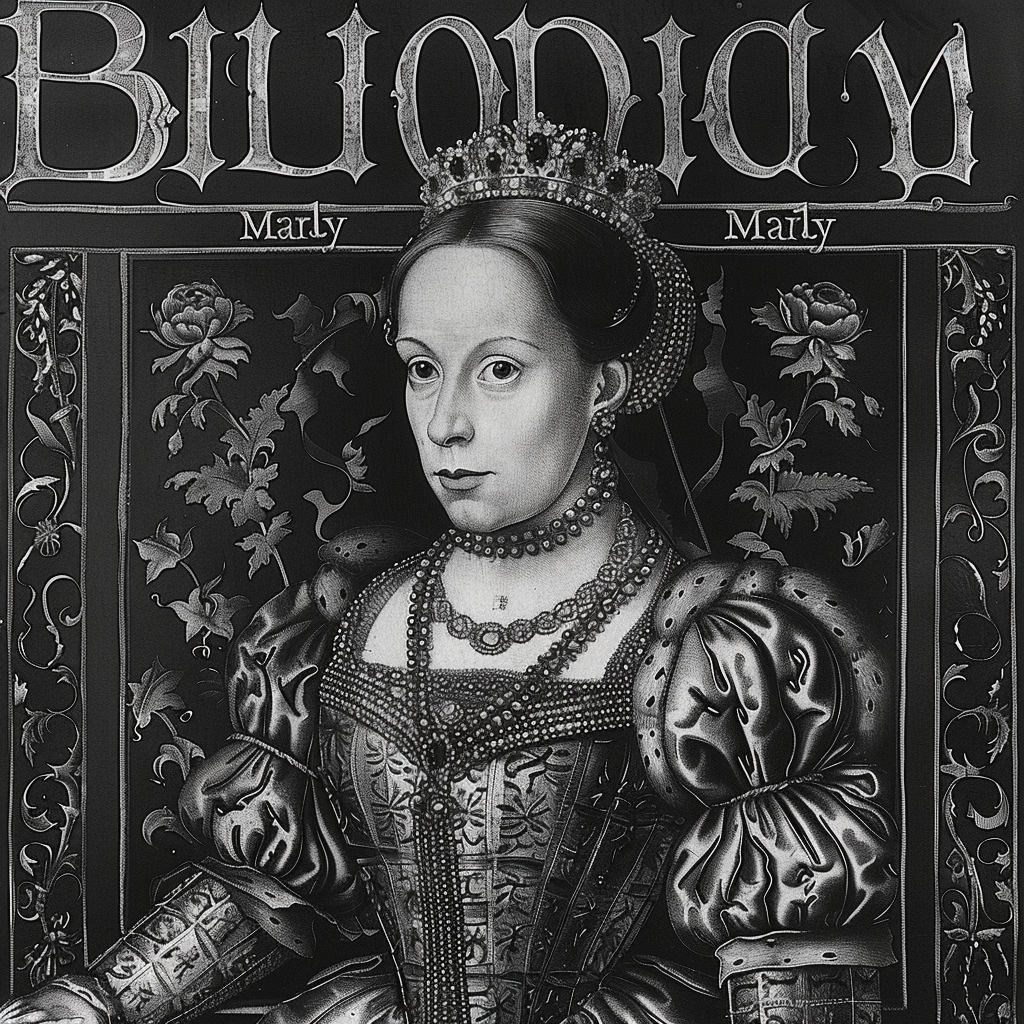Precious Metals
THE REGAL ADORNMENTS OF QUEEN MARY I OF ENGLAND
A diamond cut is a key factor to consider when choosing your next piece of diamond jewelry.
By Chinwe, Chief Creative Officer
Queen Mary I of England, also known as “Bloody Mary,” ruled from 1553 to 1558, marking a significant period in English history. Amidst the political and religious turmoil of the Tudor era, Mary I left a notable legacy, not only through her reign but also through her regal adornments. Jewelry played a pivotal role in her court, symbolizing power, prestige, and regal authority. Mary I ascended to the throne following the death of her half-brother, King Edward VI. As the first reigning queen of England, her reign was marked by attempts to restore Roman Catholicism to the country, leading to religious persecutions and political unrest. Despite facing challenges and controversies, Mary I left a lasting impact on England’s political and religious landscape. In royal courts throughout history, jewelry served as more than mere adornments; it was a reflection of wealth, status, and authority.
For Queen Mary I, jewelry was an essential aspect of her regal attire, used to convey her royal lineage and magnificence. Each piece of jewelry worn by Mary I carried significant historical and symbolic value, representing her authority as a monarch and her connection to the Tudor dynasty. She had a remarkable collection of jewelry that reflected all these aspects. She inherited some of the jewels that belonged to her father Henry VIII and her mother Catherine of Aragon, who were both avid collectors of jewels. She also received new jewels from her cousin Charles V and her husband Philip II of Spain, who were both powerful monarchs with vast resources. She also bought or commissioned some jewels from local or foreign craftsmen, who were skilled in making intricate designs with precious metals and stones. Queen Mary I’s jewelry collection was not only valuable but also meaningful. It represented her royal lineage, her Catholic faith, her personal taste, and her political alliances. It also revealed some aspects of her personality, such as her pride, her piety, her loyalty, and her love. Her jewelry collection was a testament to her life and reign, and a legacy for future generations.
Mary I’s jewelry collection encompassed a wide array of exquisite pieces, including elaborate necklaces, ornate tiaras, intricately crafted rings, and stunning gemstone-encrusted bracelets. These pieces were often adorned with precious gemstones such as diamonds, rubies, emeralds, and sapphires, sourced from across the realm and beyond. The craftsmanship and artistry behind each piece reflected the opulence and splendor of the Tudor court. Beyond their aesthetic appeal, Mary I’s jewels played a strategic role in diplomatic relations and courtly etiquette. They were often exchanged as gifts between royalty and nobility, used to forge alliances, seal treaties, and strengthen political alliances. Moreover, the wearing of specific jewels on ceremonial occasions conveyed messages of power, authority, and regal dignity, reinforcing Mary I’s status as England’s sovereign ruler.

Evolution of Aesthetic Trends in Jewelry
Queen Mary I of England, also known as “Bloody Mary,” ruled from 1553 to 1558, marking a significant period in English history. Amidst the political and religious turmoil of the Tudor era, Mary I left a notable legacy, not only through her reign but also through her regal adornments. Jewelry played a pivotal role in her court, symbolizing power, prestige, and regal authority. Mary I ascended to the throne following the death of her half-brother, King Edward VI. As the first reigning queen of England, her reign was marked by attempts to restore Roman Catholicism to the country, leading to religious persecutions and political unrest. Despite facing challenges and controversies, Mary I left a lasting impact on England’s political and religious landscape. In royal courts throughout history, jewelry served as more than mere adornments; it was a reflection of wealth, status, and authority.
For Queen Mary I, jewelry was an essential aspect of her regal attire, used to convey her royal lineage and magnificence. Each piece of jewelry worn by Mary I carried significant historical and symbolic value, representing her authority as a monarch and her connection to the Tudor dynasty. She had a remarkable collection of jewelry that reflected all these aspects. She inherited some of the jewels that belonged to her father Henry VIII and her mother Catherine of Aragon, who were both avid collectors of jewels. She also received new jewels from her cousin Charles V and her husband Philip II of Spain, who were both powerful monarchs with vast resources. She also bought or commissioned some jewels from local or foreign craftsmen, who were skilled in making intricate designs with precious metals and stones. Queen Mary I’s jewelry collection was not only valuable but also meaningful. It represented her royal lineage, her Catholic faith, her personal taste, and her political alliances. It also revealed some aspects of her personality, such as her pride, her piety, her loyalty, and her love. Her jewelry collection was a testament to her life and reign, and a legacy for future generations.
Mary I’s jewelry collection encompassed a wide array of exquisite pieces, including elaborate necklaces, ornate tiaras, intricately crafted rings, and stunning gemstone-encrusted bracelets. These pieces were often adorned with precious gemstones such as diamonds, rubies, emeralds, and sapphires, sourced from across the realm and beyond. The craftsmanship and artistry behind each piece reflected the opulence and splendor of the Tudor court. Beyond their aesthetic appeal, Mary I’s jewels played a strategic role in diplomatic relations and courtly etiquette. They were often exchanged as gifts between royalty and nobility, used to forge alliances, seal treaties, and strengthen political alliances. Moreover, the wearing of specific jewels on ceremonial occasions conveyed messages of power, authority, and regal dignity, reinforcing Mary I’s status as England’s sovereign ruler.


